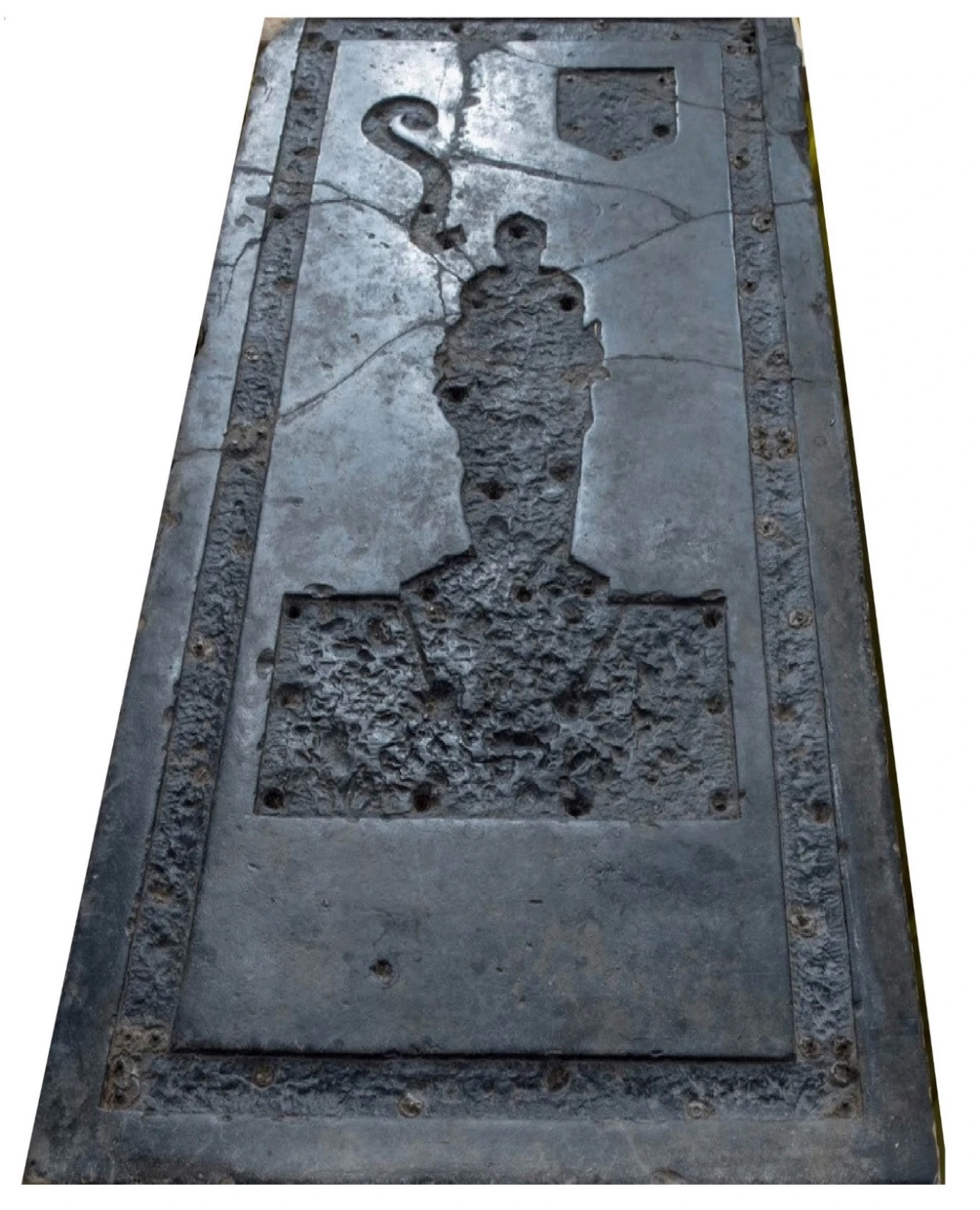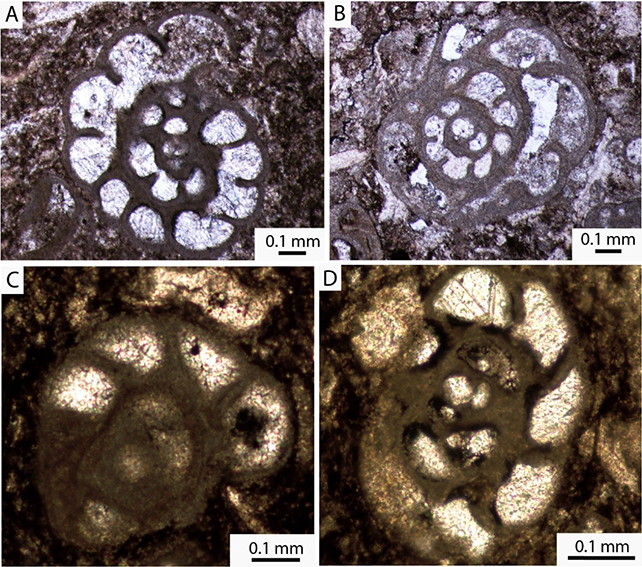In Jamestown, Virginia – the first permanent English settlement in America – there is a striking black gravestone that is believed to mark the resting place of a knight. Now researchers think they have figured out where the stone came from.
Although the stone mark is described as “marble” in historical documents, at the time this term was often applied to any type of rock that could be polished. The mineral slab dates from 1627 and is actually limestone.
The research team, from Dickinson College in Pennsylvania and the California Geological Survey, looked at the tiny shells of single-celled organisms embedded in the sedimentary rock to help pinpoint its source, using the microfossils to determine that these came from Belgium .

“Wealthy settlers in the Tidewater region of the Chesapeake Bay at the time preferentially selected black ‘marble’ for their gravestones, which was actually polished, fine-grained, black limestone,” the researchers write in their published paper.
“The iconic knight gravestone in Jamestown is one such stone. The goal of this project was to determine the source of this stone to help understand the trade routes of this era.”
It is unlikely that the English settlers of Jamestown had the tools or skills to make these types of gravestones, suggesting that the highly polished ornament would have been imported.
An analysis of gravestone fragments revealed fossilized remains of a diverse group of shelled protists called foraminiferans, including the species Omphalotis minima, Paraarchaediscus angulatusAnd Paraarchaediscus concavusand one more of each Endothira, OmphalotisAnd Globoendothyra genera that have not been identified to the species level.
The combination of co-occurring microfossils ruled out North America as the origin of the limestone slab, pointing instead to a place over the Atlantic Ocean, most similar to Ireland in Belgium.
Because similar colonial gravestones around the Chesapeake Bay had previously come from Belgium, and the fact that the European country had been well-established as a hub for the export of black “marble” since Roman times, the researchers were convinced that an artisan in this region had done this. made the gravestone.
As far back as the Middle Ages, members of England’s wealthy upper class commemorated their dead using these expensive headstones, something the colonists of Jamestown would have known about.

“Little did we realize that colonists were ordering black marble gravestones from Belgium the way we order items from Amazon, just a lot slower,” first author and geoscientist Markus Key of Dickinson College told Sandee Oster at Phys.org.
Due to its age and prominence in the local church, experts have long believed the grave belonged to the knight Sir George Yeardley, who arrived in Jamestown in 1610. He may have ordered the gravestone as a sign of his status and wealth.
Although the investigation did not focus on the owner of the gravestone, the fact that the stone was shipped from Belgium supports the hypothesis that the grave belonged to Yeardley, who wanted to follow the fashion of his home country.
“It is hoped that the results of this study will help refine the geography and timing of seventeenth-century North Atlantic trade routes between continental Europe (particularly Belgium), England, and colonial Virginia,” the researchers write.
The research has been published in the International Journal of Historical Archaeology.



